Combining Art and Science with Helen Grey
Yesterday Julie showcased one of Australia's most beautiful plants - the Gorgeous Grevilleas. Today we are going to stay in Australia but showcase some of the wonderful wildlife studies being created by self-taught Australian artist Helen Grey.
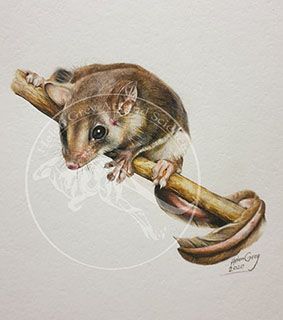
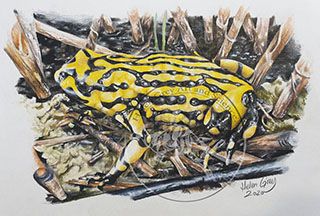
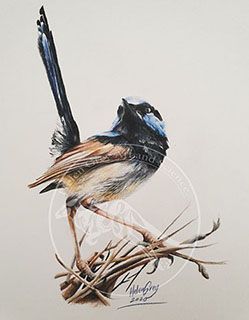
A few details about the works shown above:
“Faye the Feathertail” 2020 (above) is a feathertail glider and was created in Faber Castell Polychromos and Prismacolor Premier pencils on 5”x7” 210gsm cotton rag. Part of the Australian micro fauna tryptych set. (Note: Reference image used with permission from Jasmine Vink. @jasmine_vink - instagram.) 1
The image of the “Southern Corroboree frog” 2020 (above) features sub alpine Australian moss and watergrasses. Faber Castell Polychromos and Prismacolor Premier pencils were used on 5”x8” 220gsm cotton rag. (Custom original scientific illustration drawn using the generously provided advice and field photos and from Australian alpine ecologists and conservationists working to save this species.) 1
“Superb Samuel” 2020 (above) is a superb fairy wren who was created using Faber Castell Polychromos and Prismacolor Premier pencils on 5”x7” 210gsm cotton rag. Part of the Australian micro fauna tryptych set. (Reference image used with permission from Wendy Sinclair.) 1
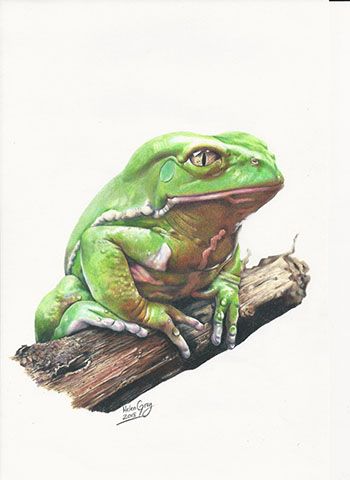
“Julio the frog”, 2018 (above) is a waxy monkey tree frog created using Prismacolor pencils on 8”x11” white card. 1
Helen Grey is a self-taught Australian artist with a primary focus on native Australasian wildlife and scientific illustration. Coloured pencil is her medium of choice, however she also works in graphite, dry pastel, ink, watercolour and mixed media. Since beginning her professional work in 2018, she has worked with a range of wildlife photographers, ecologists, zoologists and threatened species scientists and been published in the Herpetological Review Journal, Art Section (March, 2021). Future plans for her work hope to see speculative paleoart and realistic extinct fauna in her portfolio. 1
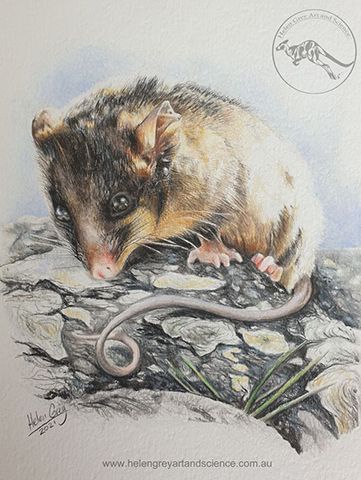
"Mountain Pygmy-possum," (Burramys parvus) (above) was drawn exclusively in coloured pencil on A5 (8x5.5") card.
Helen Grey explains:
Mountain Pygmy-possoms are a critically endangered, nocturnal marsupial found in scarce alpine areas of Victoria, Australia and Mt Kosciuszko in Kosciuszko National Park, NSW. Being a marsupial means that despite looking a little like a mouse or rat, they actually have a pouch and are closer in relation to kangaroos or koalas. Unlike their tree-dwelling possum cousins, these guys are terrestrial and live in dense alpine rock screes and boulder fields. Despite their tails no longer needed for tree branches, they can still curl them and use them to carry nesting materials. They may not be as large or well know as some of our other endangered and threatened species, but you can't say they don't have adorable charm. Sadly they are threatened mostly by habitat loss and predation from feral invasive species such as cats and foxes. A new threat being looked into is the decline of one of their food sources: the Bogong moth.
This artwork was drawn mostly referenced from a single photo supplied by Mellesa Schroder. Rock, tail and front arm were drawn in custom with reference to other photos she also sent in to assist me. 2
And now for the story of Thomas as told by Helen Grey on her Facebook page.
Thomas came into the care of my cousin Sally, 10 year ago, 2011 (wow time flies!). The photos supplied are from my cousin Jenni.Being a qualified wildlife carer doesn't just mean you get to play with cute baby animals. It is hard, voluntary, and comes with many ups and downs.
Thomas was very loved, and released into the wild once old enough. He returned at times over the years when sick or injured or just to say hi, but in 2016 when he was just 7 years old he came in with a severe case of mange. He was treated for months and the visible mange was successfully dealt with, but it sadly caused serious secondary issues that resulted in him needing to be put to sleep.
His story may sound sad, but it is actually a great success. He lived for 7 years, 5 of which as a free wombat with weekly visits back to chew the odd shoe left by the front door or nobble some extra food. 90% of wombats released from care won't survive the first year. He was very loved and will be remembered. 2
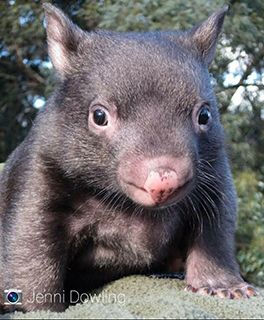
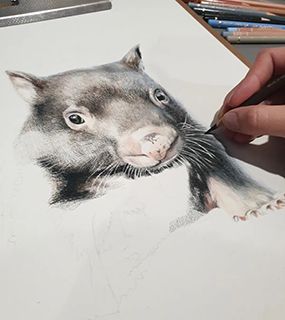
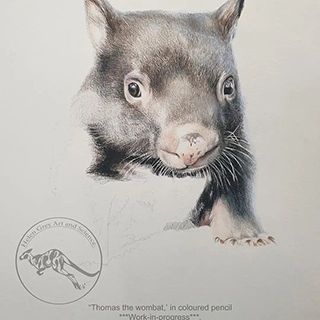
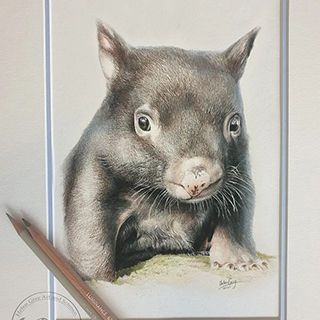
Let's conclude today's visit into the world of Australian wildlife by watching a video of Helen Grey recreating "Zander" using coloured pencils (Prismacolor pencils and Faber Castell Polychromos) on 220gsm white card, size 11"x16" (A3).
"Zander" is a four year old Asian water monitor enjoying suburban life with a variety of food on demand, enrichment to stretch his legs and the loving care of his human, Vince. Asian water monitors have been known to reach almost 2m in length, with the largest specimen on record to date being 3.21m! 3
You can check out more YouTube videos by Helen Grey by Clicking Here.
Tomorrow Helen Grey is going to teach us how to deboss a Refous Bettong!
Check out Helen Grey's website by Clicking Here.
Facebook followers can follow Helen by Clicking Here
And Helen Grey's Instragram account can he found here.
Credit
1. helengreyartandscience.com.au
2. facebook.com/HelenGreyArtAndScience
3. https://www.youtube.com/channel/UCLyUDXXqaeVkhVWrRNNeLLg
